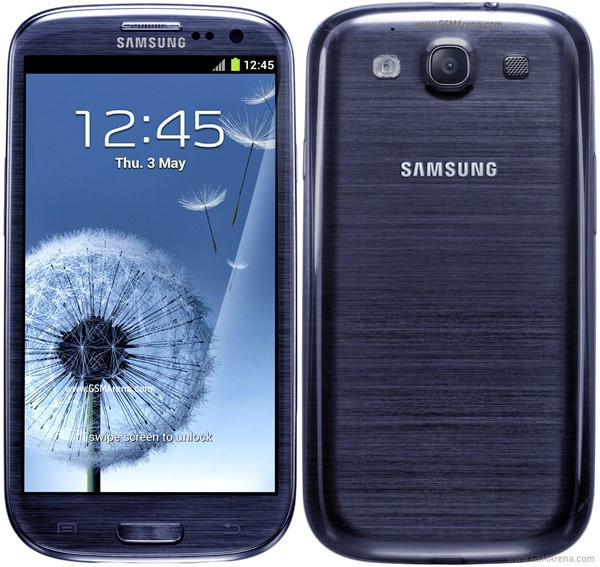Samsung Galaxy S3 vs Motorola Droid Bionic LTE: Can Droid Bionic Challenge Samsung's Flagship Phone?
-Battle of the Android 4G Heavyweights

The Motorola Droid Bionic XT875 was first showcased at the Consumer Electronics Show (CES) in January last year, alongside other notable devices from the handset maker such as the Xoom, the Attrix 4G and Sprint. The device was released in September last year, with LTE capability over Verizon's 4G network. It was both Verizon's most anticipated and most delayed phone of 2011 (alongside the Samsung Galaxy S2) but quickly became known for solid build quality coupled with powerful hardware features.
As SlashGear notes, the combination of a dual-core processor and LTE adds up to a phone that is fast in both performance and data access, while the solid display and HDMI connectivity mean it is a good choice for multimedia playback. On the flip side, however, mediocre battery life and underwhelming stills from the camera take off some of the shine. The Droid Bionic is the first LTE device with a dual-core processor. It was touted to be the fastest 4G LTE smartphone on the Verizon wireless network at the time of its release.
Samsung's Galaxy S3, on the other hand, made huge waves ever since its debut across the UK on 30 May, thanks to a plethora of revolutionary features. The phone presently holds pole position, accounting for more than 40 percent of sales for Android smartphones and will roll out across 290 carriers and 145 countries. The company is expected to churn out nearly five million smartphones a month, owing to rising demand among smartphone users.
Check out how the two smartphones stack up against each other.
Display: The Galaxy S3 flaunts a monstrous 4.8in Super AMOLED display with a capacitive touchscreen running at 720p (720 x 1280 pixels) resolution and a pixel density of 306 pixels per inch (ppi). The S3 also adds the second-generation damage resistant Corning Gorilla Glass protection for its display. In comparison, the Droid Bionic features a TFT display with a capacitive touchscreen, supporting a resolution of 540 x 960 pixels at a pixel density of 256ppi.
Processor: The S3 boasts a powerful quad-core 1.4 GHz Cortex-A9 processor based on the Exynos 4 quad chipset and a Mali-400MP GPU for graphics applications, which is suitable for high-performance computing like gaming and multi-tasking. The Droid Bionic features a dual-core 1GHz Cortex-A9 processor coupled with PowerVR SGX540 GPU. The processor is based on the TIOMAP 4430 chipset with well-balanced power-saving features.
Memory and Storage: The Galaxy S3 ships with 1GB of RAM and also supports three versions of internal storage 16/32/64 GB. The Droid Bionic, on the other hand, has only 2GB ROM and 1GB RAM with a single 16GB internal storage model. The S3 offers microSD expansion support up to 64GB while the Droid Bionic supports only up to 32GB microSD cards. The Droid Bionic, however, bundles with a 16GB microSD card, which is a big plus over the S3.
Operating System: The Droid Bionic comes loaded with Android 2.3 (Gingerbread) onboard. In comparison, the Galaxy S3 ships with Android 4.0.4 (the latest version of Ice Cream Sandwich) factory-installed.
Camera: Both the S3 and the Droid Bionic flaunt powerful eight megapixel rear cameras with a plethora of common features such as auto-focus, LED flash, face detection, geo-tagging and image stabilisation. Besides, the two smartphones also support 1080p video recording capability at 30fps (frames per second). The S3 features a decent 1.9 megapixel front-facing camera for video calls, while the Motorola phone ships with a secondary VGA camera. The S3 camera also supports special functions such as simultaneous HD video and image recording besides touch focus.
Connectivity: The Galaxy S3 offers Wi-Fi 802.11 a/b/g/n, DLNA, Wi-Fi Direct, Wi-Fi hotspot, Bluetooth v4.0 with A2DP, EDR and NFC (Near Field Communication). Its 4G connectivity speeds are HSDPA, 21Mbps and HSUPA, 5.76Mbps. The Droid Bionic also adds similar connectivity options like Wi-Fi 802.11 a/b/g/n, DLNA, Wi-Fi hotspot, Bluetooth v2.1 with A2DP, EDR. The only exception is the lack of NFC. It offers 3G connectivity speeds up to 3.1Mbps on its CDMA 1xEV-DO networks.
Battery: The Galaxy S3 is powered by a massive 2100mAh Li-Ion battery that is rated to deliver up to 590 hours of standby time on 2G and up to 790 hours on 3G networks. The battery also delivers an impressive talk time of approximately 22 hours on 2G and 12 hours on 3G networks. The Droid Bionic, in comparison, features a weaker Li-Ion 1735 mAh battery rated to provide up to 195 hours of standby time and about 10 hours of talk time.
© Copyright IBTimes 2024. All rights reserved.






















